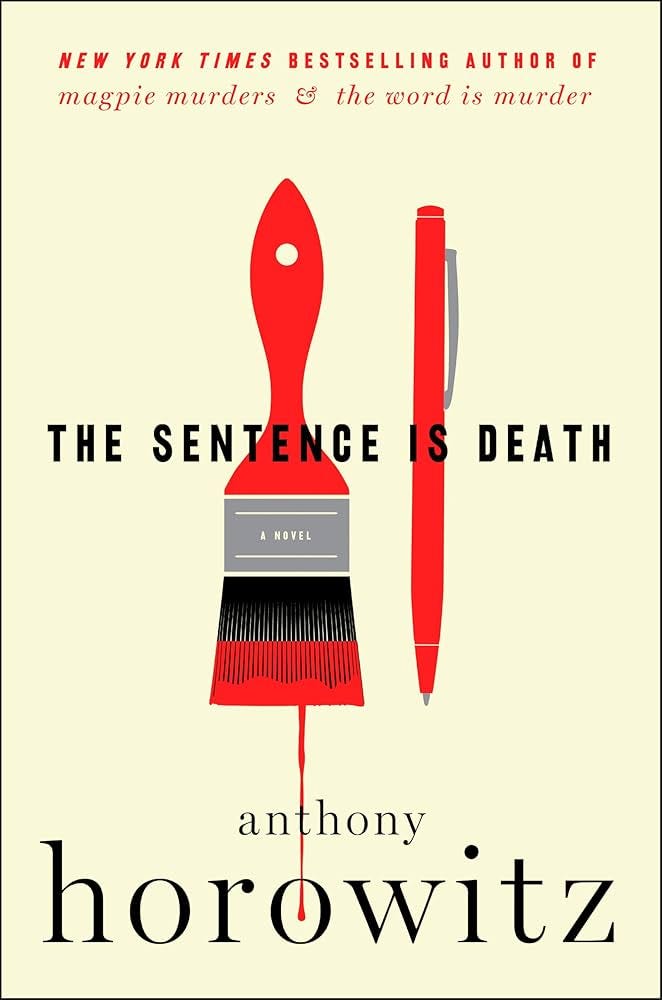The Sentence is Death, Anthony Horowitz (2020)
The Sentence is Death, Anthony Horowitz (2020). I chose to read another Horowitz mystery for one reason: I wanted to be reading something entertaining, absorbing, and distracting for the stressful Election Day of 2024. I think this was a good choice and did what I was hoping it would do. It didn’t keep this Election Day from being awful, unfortunately, but it gave me something enjoyable to burrow into and escape from it.
This is number two out of five in the Hawthorne & Horowitz series of mysteries (the first, The Word is Murder, I reviewed here a couple months ago). The premise of the series is that the Dr. Watson-esque narrator character is Anthony Horowitz himself, successful British TV writer and novelist, whose main job writing series like Foyle’s War provides a backdrop and occasional distraction from the mystery at hand. The Holmesian genius detective is Daniel Horowitz, who has lost his full time employment with Scotland Yard because of his obvious personality flaws, but is still brought in to consult because of his equally obvious deductive and observational gifts. Hawthorne is “Holmesian” primarily for 3 reasons: his talent for deduction, his eccentric character, and above all his habit of making casual, but infallible observations about all the people around him (especially) Horowitz based on tiny details in their dress and demeanor. Somehow, Hawthorne has convinced Horowitz to chronicle his cases - thus the series.
In any case the premise works well as a vehicle for Horowitz to craft enjoyable classic mysteries, with just the right blend of clues, red herrings, misdirections, and plot twists. There’s quite a bit of humor, too - in this book even more than in the first installment of the series. A prominent London divorce lawyer, Richard Price, is found bludgeoned to death with a bottle of wine; near his body the number “182” is painted on the wall. This crime brings H & H into a world of uppercrust London suspects, whose foibles and flaws match Hawthorne’s own. Horowitz gets himself into trouble both with the suspects and even more so with Hawthorne’s erstwhile Scotland Yard colleagues, who are none too thrilled at the prospect of Hawthorne taking credit for solving their case. And his earnest but invariably misguided efforts to solve the crime himself complicate matters, earning him Hawthorne’s scorn and amusing the reader.
The Hawthorne-Horowitz relationship is the angle that breathes life into these well-crafted mysteries. One wonders how much of himself Horowitz really put into the description of himself on the page; certainly the professional aspects of his life seem realistically presented, and his bemused disdain for some of the foolish pretensions of the self-important London elite, who comprise the suspects in the mystery, seems sincere. (An important convention of classic-style murder mysteries is that all the suspects are more or less awful people who could plausibly have committed murder.)
Above all, these mysteries feel like they were fun to conceive and write - somewhat tongue-in-cheek, but not annoyingly so - and they’re fun to read as well. If you are in the mood for pure escapism, as I certainly was around the 2024 election debacle, you could do a lot worse. (Read around Election Day, 2024)




